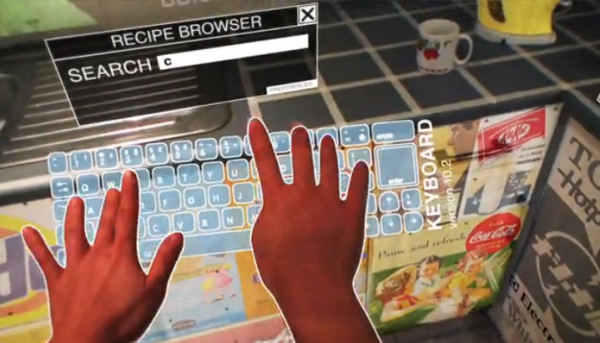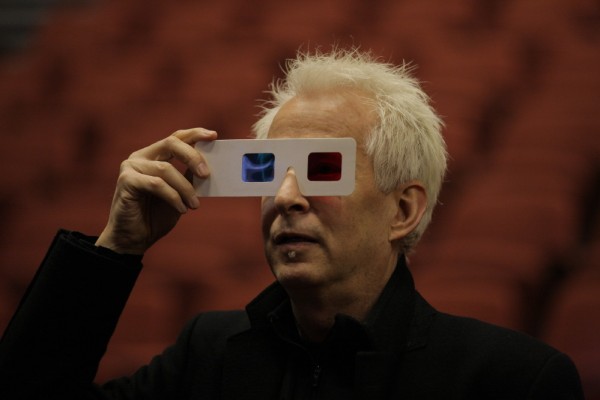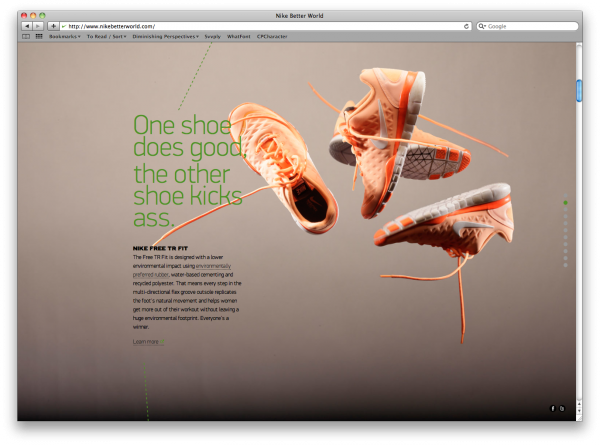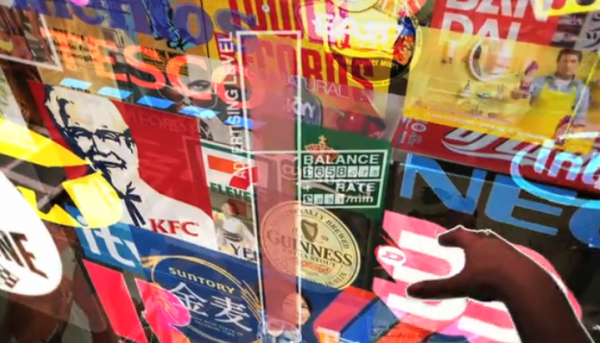With 32 years of experience in Hollywood through the advent of CGI, one would expect nothing less. Dale’s talk began with the rectangle — a bounding box for media since its origin. Talking about the shifting focus of media, he illustrated it’s evolution through different types of paradigms from print, to photography, film, big screen, interactive platforms and virtual reality through to 3d — each one challenging the audiences perception of reality but still within the confines of a rectangle.
New technology is changing the conversation. Through touch, augmented reality, gesture recognition and Stereo 3D new opportunities are presenting themselves to broadcasters and publishers, allowing screens to become new hybrid spaces where we consider ‘not just what is on the surface of the screen, but what is beyond and in front of the screen’.
Central to his talk was this notion of ‘Space’ and ‘Place’; a space being but an area, but one with meaning becoming a place — somewhere to engage and interact. While a rectangle is 2 dimensional, Dale illustrated that by coupling advancements in technology and interaction with a clever use of layers, death of focus and pace, it is possible to create a more dimensional ‘place’ — one that’s free for advertisers to brand, broadcasters to layer information, and publishers to engage their audience by exposing them to curated content from external sources, all whilst remaining connected to the source content.Though Dale showed many examples of this concept, none were perhaps as enjoyable as one of his more famous pieces — the gestural interface on the Minority Report, which he worked on as part of the research team. Layers of content shuffling from front to back though never leaving the space itself.

Dale Herigstad
– Cannes Touchwall 2009 by Possible World Wide
– A more basic example of this concept are HTML5 sites such as Nike Better World, that through a play with layer and pace we are encouraged to engage with a place beyond that of a screen
While print and (most) websites invited us to flick from page to page, these new platforms encourage us to push back, and look up and down as well as left to right.
The advent of 3d also offered interesting opportunities in communications — where once a live sporting event was viewed as a flat screen, now content such as the scoreboard, substitution announcements and other such information could be raised to a level hovering in front of the action, which need not interfere with the play itself as it’s easier to look beyond.
Dale talked about the opportunities for broadcasters to engage the audience using relevant dynamic IP content streamed though a broadband connection. He demonstrated this with features form the Miami Vice HD-DVD, where you could track the characters on a Google Earth interface as they moved through Miami. An interesting addition for the hardcore fan.
There are also functionality within the interface to learn more about the characters, pulling live content from the actors own personal website such as pictures and videos, creating a more immersive, enriching experience.
To finish Dale was asked what the next 10 years may bring. Though impossible to accurately predict, he pointed to Keiichi Matsuda‘s vision of augmented hyper reality as an example of where the technology could take us beyond it’s current crude application. The next challenge certainly seems to be how media can move beyond the confines of a rectangular space.

Text: Matt Judge, DesignAssembly











 Photo: Gerhard Kassner
Photo: Gerhard Kassner













Pingback: Fontblog | TYPO London 2011 im Rückblick